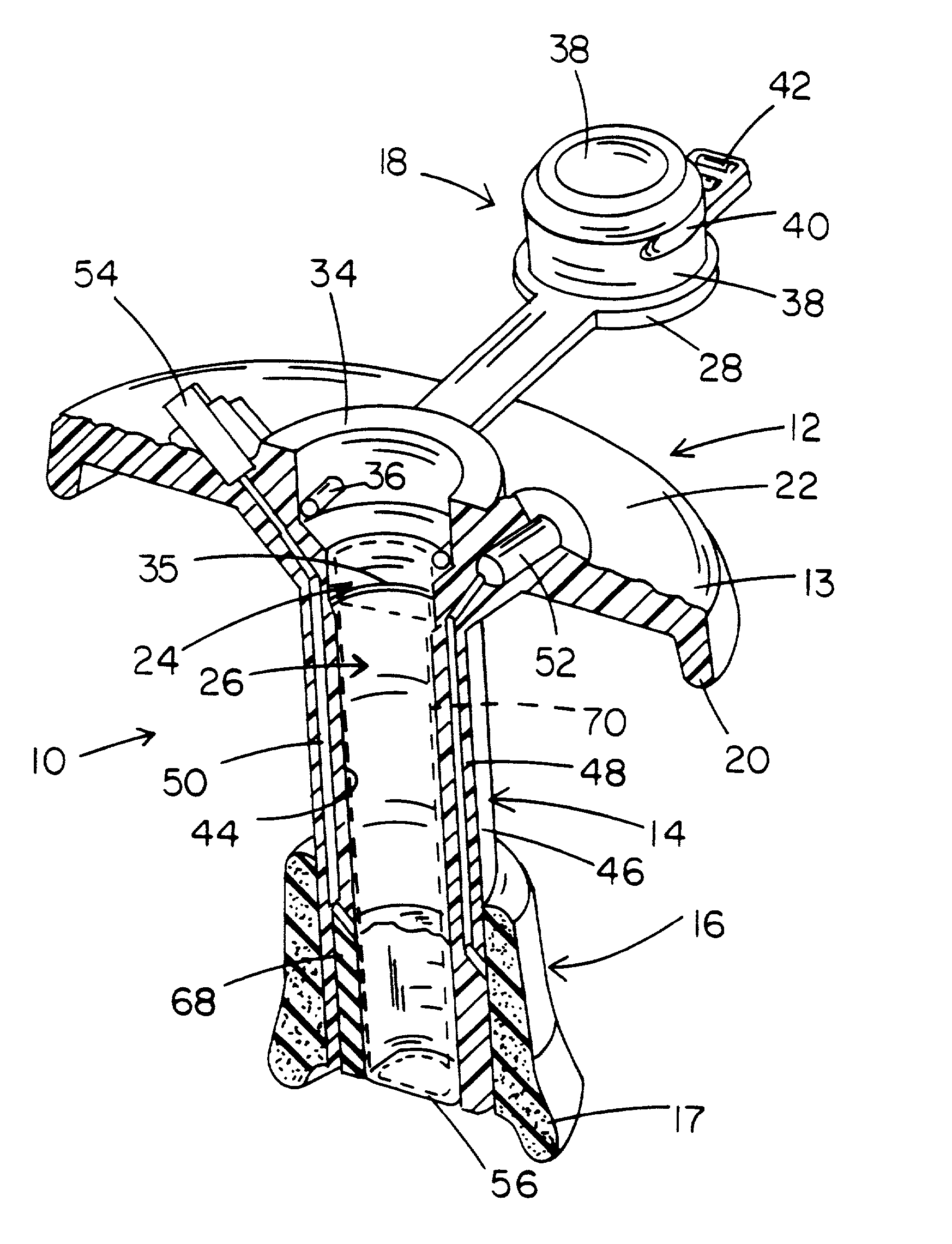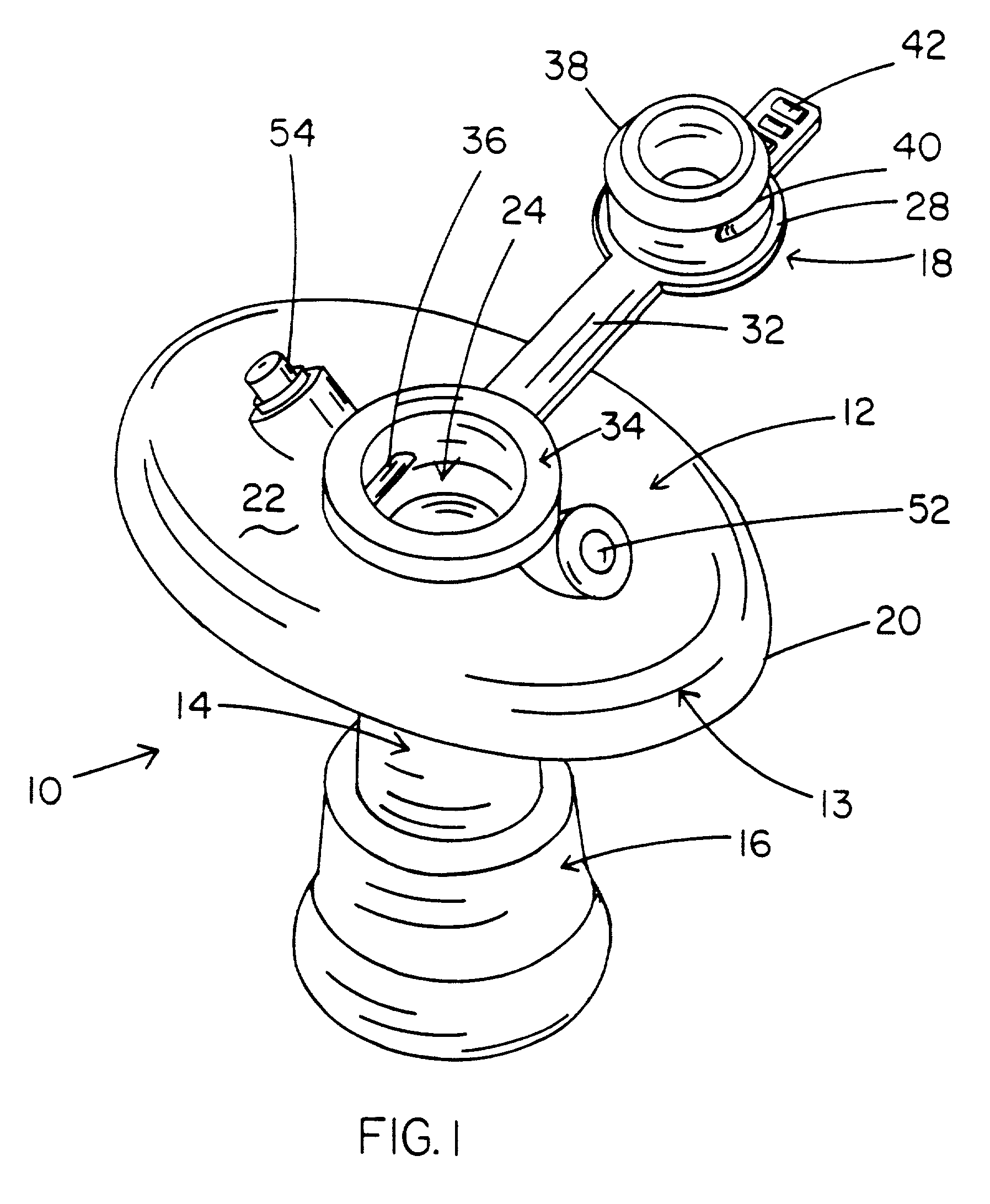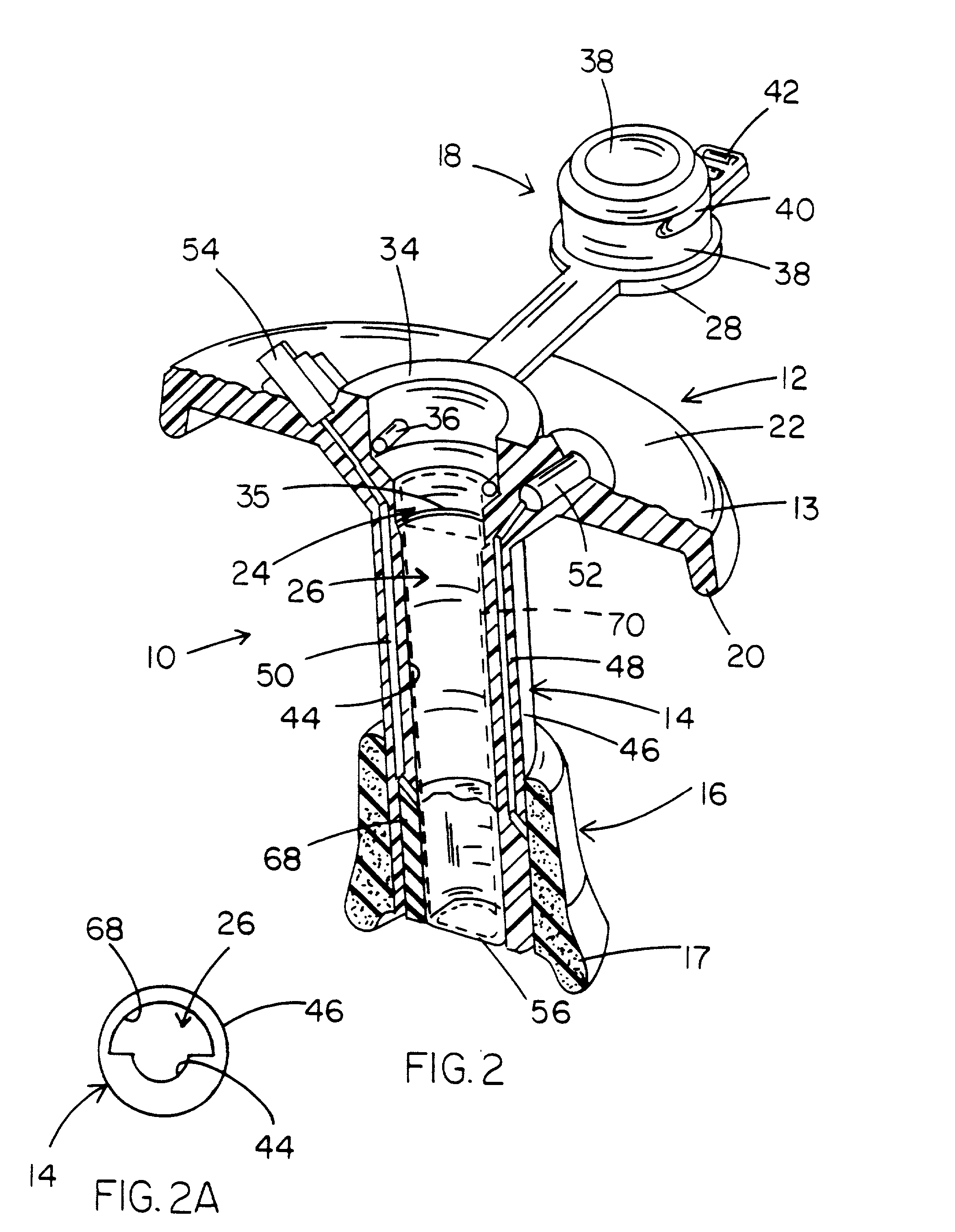Pad for use with continent ostomy port
a technology for ostomy and continent, applied in the field of self-retaining ostomy port, can solve the problems of increased difficulty in obtaining ostomy,
- Summary
- Abstract
- Description
- Claims
- Application Information
AI Technical Summary
Benefits of technology
Problems solved by technology
Method used
Image
Examples
second embodiment
[0072] An alternative, spherical shape for the balloon / anti-reflux valve structure 56' is shown schematically in the second embodiment, port 100, as shown in FIGS. 12 and 15. In each case, inflation via introduction of air or other fluid through a small lumen is a suitable method for activating the valve to close off the proximal end of lumen 26. The above anti-reflux valve structures are offered by way of illustration only and are not intended to be limiting, as a variety of medical valve devices, both known and yet to be conceived, are expected to be suitable for use in the new continent ostomy port device, of either embodiment shown, or other reasonable variations thereof. Of course, the two anti-reflux valves illustrated and described herein in relation to port devices 10, 100 can be interchanged with respect to the port devices.
[0073] FIGS. 9, 10 and 11 illustrate two of a number of practical constructions of an important aspect of the new COP 10, 100. Cartridge 70, shown in FI...
first embodiment
[0078] As in the first embodiment, cartridge 70' also has an elongated cylindrical body or tampon 72', but includes a central longitudinal core 71 of deodorizing material, instead of the deodorizing substance being mixed throughout or impregnating the tampon material.
[0079] In this second cartridge example, end piece 74' is effectively merely a continuation of the tampon per se with an elongated, flexible filamentous member 76' connected for improved handling, and an annular ridge 79 extending outwardly, preferably entirely around the cartridge end 74', to act as a detenting mechanism, engaging an annular groove 81 within the distally directed end of alternative COP device 100, as illustrated in FIG. 11. This construction provides the user with a palpable "stop" point to help prevent accidental over-insertion.
[0080] Clearly, as with other aspects of the new continent ostomy port, various features of the two cartridge examples 70, 70' could be interchanged as desired, depending upon ...
PUM
 Login to View More
Login to View More Abstract
Description
Claims
Application Information
 Login to View More
Login to View More - R&D
- Intellectual Property
- Life Sciences
- Materials
- Tech Scout
- Unparalleled Data Quality
- Higher Quality Content
- 60% Fewer Hallucinations
Browse by: Latest US Patents, China's latest patents, Technical Efficacy Thesaurus, Application Domain, Technology Topic, Popular Technical Reports.
© 2025 PatSnap. All rights reserved.Legal|Privacy policy|Modern Slavery Act Transparency Statement|Sitemap|About US| Contact US: help@patsnap.com



